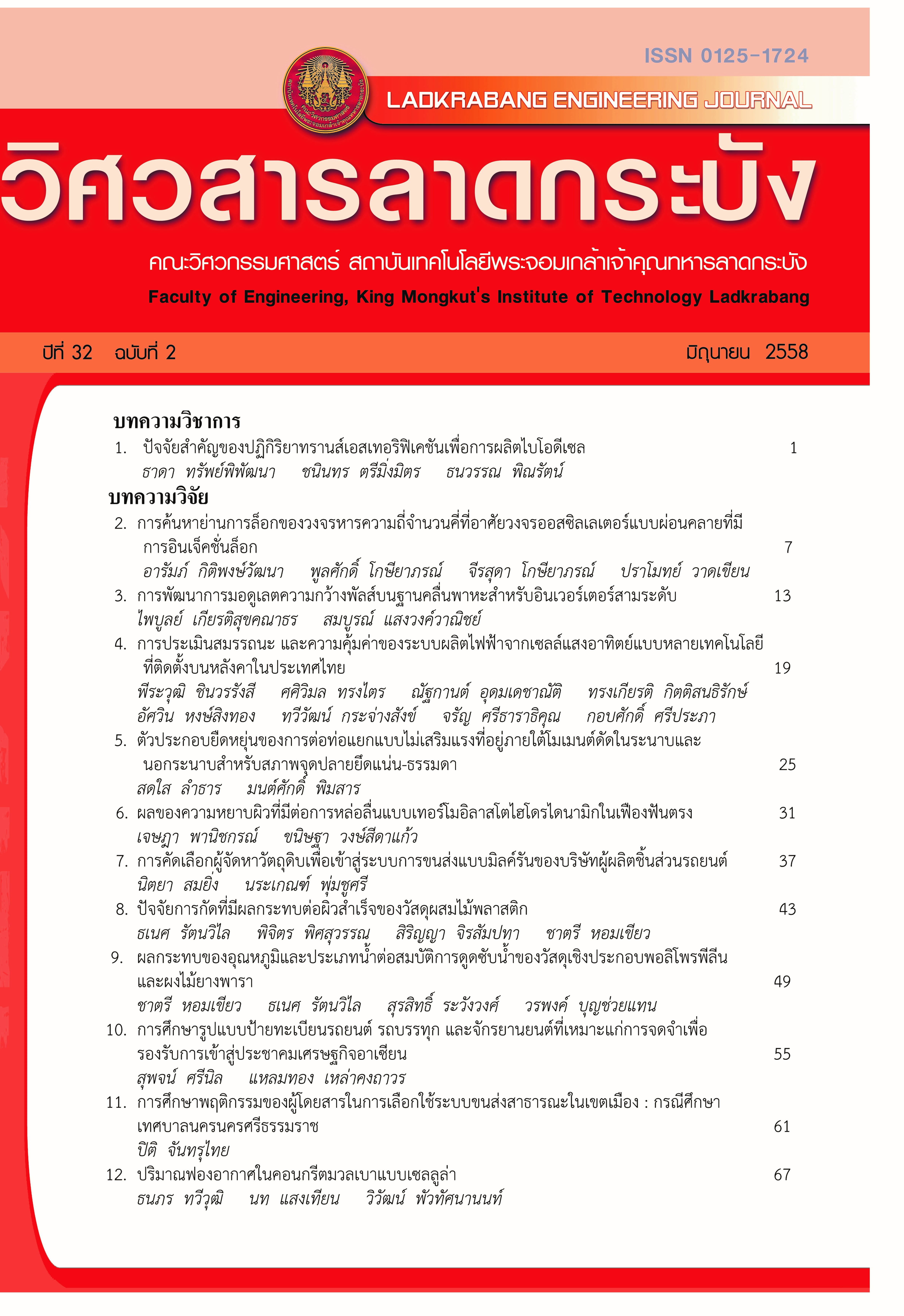Flexibility Factors of Unreinforced Branch Pipe Connections Subjected to In-Plane and Out-of-Plane Bending Moments for Fixed-Simply End Conditions
Keywords:
Flexibility factor,, Branch pipe connections,, Run-branch pipe intersectionAbstract
Flexibility factors are an important parameter in pipe stress analysis, especially, for branch pipe connections subjected to external moments, in-plane and out-of-plane. Inaccuracy of these can influence to calculated moments which result in inaccurate displacement stress range. The purpose of this paper is to investigate the effects of lengths of the run and branch pipeson flexibility factors and correlation equations for these flexibility factors on geometry parameters (d/D, D/T, t/T) for range 0.333 £ d/D £ 1, 20 £ D/T £ 250 and 0.333 £ t/T £ 3 subjected to in-plane and out-of-plane bending moments for fixed-simply end conditions. Finite element method with linear elastic property is employed for stress and flexibility factor evaluation. At first, FEM stress results of run-branch pipe intersection are verified by comparing with the available experimental data, the study on effect of lengths for the run and branch pipes, the determination of flexibility factors and correlation equations for these flexibility factors was carried out, respectively. The simulated result, the stress distribution trend, shows good agreement with the experimental data. Moreover, the FEA simulations of varying lengths of the run and branch pipes and fixed-simply end conditions, were performed and the calculated results indicate that run and branch pipe lengths have an effect on flexibility factors.
References
[2] E. C. Rodabaugh, “Accuracy of Stress Intensity Factors for Branch Connections,” WRC Bulletin 329, 1987.
[3] ASME Sec.3 Div. 1, “Rules for Construction of Nuclear Power Plant Components,” 2012.
[4] J. L. Mershon, “Local Stresses in Cylindrical Shells Due to External Loadings on Nozzles,” WRC Bulletin 297, 1984.
[5] T. Fujimoto and T. Soh, “Flexibility Factors and Stress Indices for Piping Components with D/T <=100 Subjected to In-Plane or Out-of-Plane Moment,” PVP, Vol.110, pp. 374–386, 1988.
[6] E. A. Wais, “Stress Intensification Factors and Flexibility Factors for Unreinforced Branch Connections,” PVP, Vol. 383, 1999.
[7] G. E. O. Widera, “Flexibility Factors for Branch Pipe Connections Subjected to In-Plane and Out-of-Plane Moments,” PVP, Vol.128, pp.89–94, 2006.
[8] E. C. Rodabaugh and E. A. Wais, “Standard Flexibility Factor Method,” Report 1, WRC Bulletin 463, 2001.
[9] E. C. Rodabaugh, “Stress Indices and Flexibility Factors for Nozzles in Pressure Vessels and Piping,” ORNL/Sub-2913, 1979.
[10] S. P. Timoshenko and J. N. Goodier, Theory of Elasticity, 3rd ed., McGraw-Hill, 1970.
[11] J. M. Corum and R. C. Gwaltney, “Theoretical and Experimental Stress Analysis of ORNL Thin-Shell Cylinder-to-Cylinder Model No.1,” ORNL, 1972.
[12] Widera, G. E. O., and Xue, L., “Guidelines for Modeling Cylinder to Cylinder Intersections,” WRC Bulletin 493, 2004.
[13] http://cran.r-project.org/.
Downloads
Published
How to Cite
Issue
Section
License
The published articles are copyrighted by the School of Engineering, King Mongkut's Institute of Technology Ladkrabang.
The statements contained in each article in this academic journal are the personal opinions of each author and are not related to King Mongkut's Institute of Technology Ladkrabang and other faculty members in the institute.
Responsibility for all elements of each article belongs to each author; If there are any mistakes, each author is solely responsible for his own articles.






